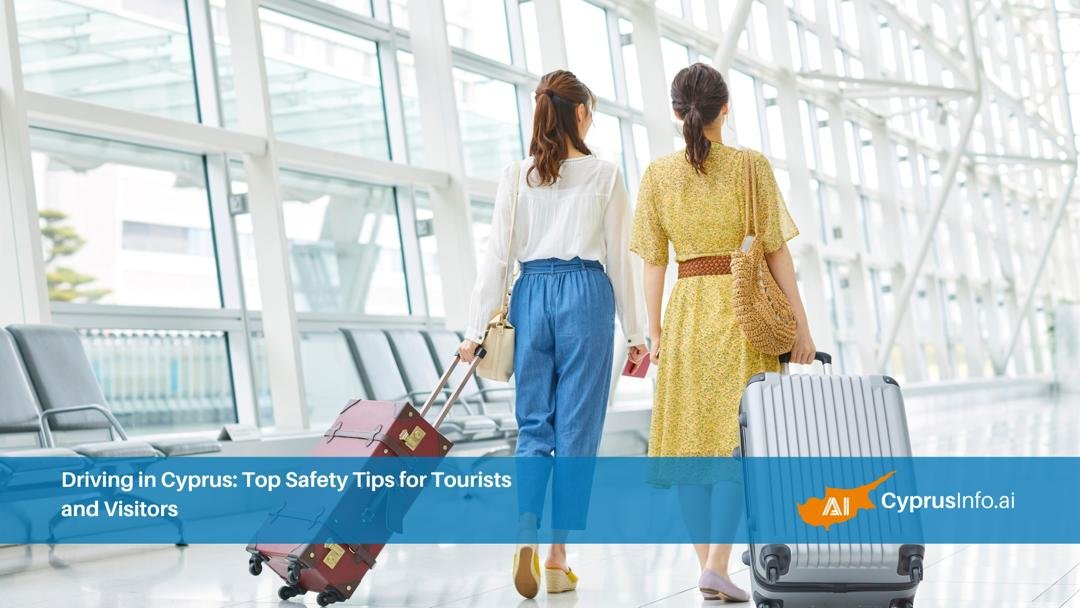Driving in Cyprus: Top Safety Tips for Tourists and Visitors
Renting a car and exploring Cyprus on your own terms is, without a doubt, the best way to experience the island's incredible diversity. It gives you the freedom to discover hidden beaches, wander through ancient villages, and venture into the stunning Troodos Mountains at your own pace. However, driving in a foreign country can be daunting. With different rules, road conditions, and driving styles, being prepared is key to a safe and enjoyable road trip.
This guide is designed to be your essential companion for getting behind the wheel in Cyprus. We'll cover everything from the most fundamental rules to local driving etiquette, ensuring you can navigate the island's roads with confidence and safety in 2025.
The Golden Rule: Driving on the Left
Let's start with the most important rule of all: in Cyprus, you drive on the left-hand side of the road. This is a legacy of British rule and is the single biggest adjustment for many visitors from North America and most of Europe. When you pick up your rental car, take a few moments in the car park to get accustomed to the seating position and the gear stick (if driving a manual) being on your left. Remember to enter roundabouts by turning left and always stay in the left lane unless overtaking.
Renting a Car in Cyprus
The process of renting a car is straightforward, with numerous options available at both Larnaca and Paphos airports. Most reputable car rental agencies have desks inside the airport terminals. Rental cars are easily identifiable by their red license plates, which immediately signals to local drivers that you are a tourist, and they are generally more patient as a result.
Documents and Requirements
To rent a car, you will typically need:
- A valid driving license from your home country (held for at least one year). An International Driving Permit is not usually required for licenses in English.
- Your passport for identification.
- A credit card for the security deposit.
- To be at least 21 years old (though some companies require drivers to be 25, and surcharges may apply for younger drivers).
Ensure that your rental includes full insurance. It's highly recommended to opt for comprehensive coverage with no excess (often called Super Collision Damage Waiver) for complete peace of mind.
Understanding the Roads and Speed Limits
Cyprus has a modern and well-maintained road network, especially the main motorways connecting the major cities.
- Motorways (Highways): These are modern, multi-lane roads connecting Nicosia, Limassol, Larnaca, and Paphos. The speed limit is typically 100 km/h (62 mph), with a minimum speed of 65 km/h.
- Main/Rural Roads: On most other main roads outside of built-up areas, the speed limit is 80 km/h (50 mph).
- Built-up Areas: In towns, cities, and villages, the speed limit is 50 km/h (31 mph) unless otherwise signposted.
Speed cameras are common, especially on motorways and major city roads, so always be mindful of your speed. Road signs are generally in both Greek and English, making navigation relatively easy.
Key Traffic Rules and Local Etiquette
Beyond the basics, a few key rules and local habits are important to know.
- Roundabouts: Give way to traffic already on the roundabout, approaching from your right. Use your indicators when exiting.
- Seatbelts: Wearing a seatbelt is mandatory for all occupants, both in the front and back seats.
- Mobile Phones: Using a mobile phone without a hands-free system while driving is strictly illegal and carries heavy fines.
- Drink Driving: Cyprus has a very strict, low alcohol limit (0.22 mg/ml). The rule is simple: if you're driving, don't drink.
- Parking: Never park on a double yellow line. A single yellow line indicates no parking at certain times (check the signs). Parking in designated municipal car parks is often the easiest option in city centers.
- Local Driving Style: Cypriot drivers can be assertive. They may follow closely or use their horn more readily than you're used to. Stay calm, drive defensively, and don't feel pressured to speed up.
Navigating Unique Environments
Driving in a bustling city is very different from navigating a winding mountain road.
Mountain Roads
When exploring the Troodos Mountains, be prepared for narrow, winding roads with sharp hairpin bends. Drive slowly, use a low gear on steep descents, and be prepared to honk your horn on blind corners to alert oncoming traffic. The views are spectacular, but always pull over in a safe place to admire them. These roads are your gateway to incredible Cyprus hiking trails, but the journey requires your full attention.
Village Streets
Many of the island's charming villages have very narrow streets. It's often best to park on the outskirts of the village and explore on foot rather than risk getting stuck. This is especially true for villages featured in our Cyprus travel blog.
Frequently Asked Questions (FAQ)
1. What is the most important rule for driving in Cyprus?
The absolute most important rule is to drive on the left-hand side of the road. Everything else, from roundabouts to overtaking, follows from this single principle.
2. Do I need an International Driving Permit (IDP) for Cyprus?
For most visitors with a valid license from an EU country, the UK, the US, or other countries where the license is in English, an IDP is not required. However, it's always a good idea to check with your specific rental agency beforehand if your license is not in English.
3. Are rental cars in Cyprus manual or automatic?
Both are widely available. Manual cars are often slightly cheaper to rent. If you are not experienced with driving a manual car, especially with your left hand, it is strongly recommended to book an automatic for a safer and more comfortable experience.
4. What are the fuel stations like?
Fuel stations are plentiful in towns and along major highways. Many are attended during the day, where an attendant will fill the car for you. After hours, most have 24/7 automated payment machines that accept cash and credit cards.
5. What should I do in case of a breakdown or accident?
In case of an accident, call the police (112 or 199). For a breakdown, your rental car company's emergency number should be on the rental agreement or a sticker inside the car. Do not move the vehicle after an accident until the police arrive, unless it is causing a major obstruction.
6. Is it safe to drive in the Troodos Mountains in winter?
It can be challenging. From January to March, roads can be icy or covered in snow. If you plan to drive in the mountains during this time, it is essential to have a 4x4 vehicle or ensure your car is equipped with snow chains. Always check the police road condition reports before you set off.
7. Are child car seats mandatory in Cyprus?
Yes, children under the age of 12 or shorter than 150cm must use an appropriate child restraint system. You can rent car seats from your rental company when you book your vehicle.
8. How do I navigate in Cyprus?
Using a GPS app on your smartphone, like Google Maps or Waze, is the easiest way to navigate. The road signs are in both Greek and English, which is very helpful. It's a good idea to have a phone holder for your car and a charger.
9. What do the red license plates on cars mean?
The red license plates signify that the car is a rental vehicle. This is helpful as it alerts local drivers that the person behind the wheel is likely a tourist who may be unfamiliar with the roads, encouraging them to be more cautious and patient.
10. Can I drive to the northern part of Cyprus?
You can cross the Green Line at several designated checkpoints. However, you must check with your car rental company first. Most rental agreements for cars in the Republic of Cyprus do not cover insurance for the northern part. You will typically need to purchase separate third-party insurance at the border crossing.



